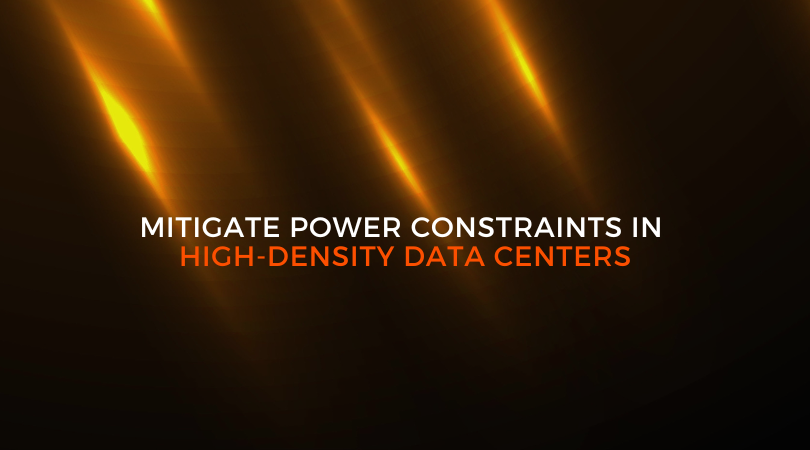High-density workloads are pushing data centers to their limits, making power constraints a top concern. But rather than seeing these challenges as roadblocks, the most forward-thinking organizations view them as opportunities for innovation. The key to success lies in optimizing energy use, modernizing infrastructure, and leveraging cutting-edge solutions to stay ahead in an increasingly power-hungry world.
Implement Liquid Cooling Solutions
Traditional air cooling is struggling to keep up with the intense heat generated by high-density workloads. Liquid cooling offers a far more efficient solution, transferring heat away from components faster and reducing overall energy consumption.
By integrating liquid cooling, data centers can significantly improve power efficiency while maintaining optimal equipment performance.
Optimize Power Usage Effectiveness (PUE)
Power Usage Effectiveness (PUE) is a key metric for assessing how efficiently a data center consumes energy. Reducing PUE means ensuring that more of the energy drawn goes directly to IT equipment rather than being wasted on inefficient cooling or outdated infrastructure.
By refining cooling strategies and upgrading to energy-efficient systems, data centers can cut waste, lower costs, and reduce their environmental impact.
Adopt Modular Data Center Designs
Modular data centers offer a flexible, scalable approach to infrastructure. Instead of investing in large-scale, energy-intensive facilities upfront, modular designs allow incremental expansion as demand grows. This avoids unnecessary power usage on underutilized capacity, making data centers more energy-efficient and cost-effective.
Transition to a Hybrid Energy Model
While renewable energy sources like solar, wind, and hydro are essential for sustainability, relying solely on them may not always be practical due to intermittency issues. A hybrid approach that integrates both renewables and traditional fossil fuels can provide a balanced solution.
By leveraging renewables when available and supplementing with conventional power sources as needed, data centers can enhance energy reliability while reducing their carbon footprint. Strategic energy sourcing ensures uninterrupted operations without over-reliance on any single power source.
Install Advanced Power Management Systems
Smart power management systems offer real-time insights into energy usage, helping operators detect inefficiencies and optimize distribution. These systems can dynamically adjust power allocation, ensuring that energy is used effectively across all components. By integrating AI-driven analytics, data centers can fine-tune their energy strategies and minimize waste.
Upgrade Legacy Equipment
Outdated servers and networking hardware often consume far more power than modern alternatives. Investing in energy-efficient infrastructure—such as next-generation processors and high-efficiency storage—can significantly cut energy consumption while enhancing performance. A phased upgrade strategy helps balance cost with long-term sustainability goals.
Shift Non-Critical Workloads to the Cloud
Running every workload in-house can strain power capacity. Offloading non-critical tasks to the cloud allows data centers to free up energy resources for mission-critical operations. Many cloud providers operate highly efficient, renewable-powered infrastructures, further contributing to sustainability efforts.
Embrace Edge Computing Solutions
Edge computing reduces the need to transmit massive amounts of data to central locations by processing information closer to the source. This alleviates power demands on core data centers while enhancing speed and reducing latency. By deploying edge nodes, organizations can distribute workloads efficiently and lower overall power consumption.
Invest in Energy-Efficient UPS Systems
Uninterruptible Power Supplies (UPS) are crucial for maintaining uptime, but traditional systems can be inefficient. High-efficiency UPS units reduce energy waste and ensure reliable backup power without excessive overhead. Selecting UPS systems with intelligent energy optimization features helps further improve power efficiency.
Optimize Airflow Management
Effective airflow management plays a key role in reducing cooling-related energy use. Techniques such as hot/cold aisle containment, blanking panels, and optimized rack layouts help improve thermal efficiency. By directing airflow where it’s needed most, data centers can lower cooling costs and enhance overall power efficiency.
Monitor Energy Consumption with Smart Sensors
IoT-enabled smart sensors provide real-time data on power usage, helping operators identify inefficiencies and take corrective action. These sensors track energy consumption at the rack and server level, offering insights that enable smarter energy allocation and waste reduction.
Optimize Power Distribution Units (PDUs)
Intelligent PDUs provide granular visibility into power distribution, allowing for better load balancing and energy optimization. By leveraging smart PDUs, data centers can ensure that power is allocated efficiently, preventing bottlenecks and reducing unnecessary consumption.
Incorporate Battery Energy Storage Systems
Battery Energy Storage Systems (BESS) allow data centers to store excess energy during low-demand periods and deploy it during peak times. This reduces strain on the grid and ensures a stable power supply even in times of fluctuation. Integrating BESS with renewable sources enhances energy resilience.
Here to Help You Prepare for Change
If there’s one constant in data center operations, it’s change. Designing infrastructure with flexibility and adaptability in mind ensures seamless integration of new technologies and future growth. Staying ahead of power constraints isn’t just about managing energy—it’s about rethinking how data centers operate in an evolving digital landscape.
At Donwil, we specialize in helping organizations navigate these challenges with tailored solutions for power efficiency, cooling, and infrastructure optimization. If you’re ready to explore options, let’s talk about how we can support your data center’s future.

